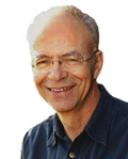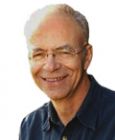A few years ago World Bank asked researchers to listen to what the poor are saying. They were able to document the experiences of 60,000 women and men in 73 countries. Over and over, in different languages and on different continents, poor people said poverty meant these things:
• You are short of food for all or part of the year, often eating only one meal per day, sometimes having to choose between stilling your child's hunger or your own, and sometimes being able to do neither.
• You can't save money. If a family member falls ill and you need money to see a doctor, or if the crop fails and you have nothing to eat, you have to borrow from a local moneylender and he will charge you so much interest the the debt continues to mount and you may never be free of it.
• You can't afford to send your children to school, or if they do start school, you have to take them out again if the harvest is poor.
• You live in an unstable house, made with mud or thatch that you need to rebuild every two or three years, or after severe weather.
• You have no close source of safe drinking water. You have to carry it a long way, and even then, it can make you ill unless you boil it.
But extreme poverty is not only having unsatisfied material needs. It is often accompanied by a degrading state of powerlessness. Even in countries that are democracies and relatively well-governed, respondents to the World Bank survey described a range of situations in which they had to accept humiliation without protest. If someone takes what little you have, and you complain to the police, they may not listen to you. Nor will the law necessarily protect you from rape or sexual harassment if you are a woman. You have a pervading sense of shame and failure because you cannot provide for your children. Your poverty traps you and you lose hope of ever escaping from a life of hard work for which, at the end, you will have nothing to show beyond bare survival.
The World Bank defines extreme poverty as not having enough income to meet the most basic human needs for adequate food, water, shelter, clothing, sanitation, health care or education. This is the situation of about one billion people - the ones referred to in the oft-quoted statistic that a billion people are living on less than US$1 per day. About 300 million extremely poor people are in sub-Saharan Africa, with the next largest group on the Indian subcontinent. Many more of the extremely poor live in East Asia, although the number there has been falling rapidly. The remainder are distributed around the world, in Latin America and the Caribbean, the Pacific, the Middle East, North Africa, Eastern Europe and Central Asia.
On hearing the "one dollar a day" figure, the thought may cross your mind that in many developing countries, it is possible to live much more cheaply than in the industrialized nations. Perhaps you have even done it yourself, backpacking around the world, living on less than you would have believed possible. So you may imagine that this level of poverty is not really as extreme as it would be if you had to live on that single dollar a day in the United States, or any other industrialized nation. If such thoughts did occur to you, you should banish them now, because the World Bank has already made that adjustment in purchasing power - what its figures refer to is the number of people existing on a daily total consumption of goods and services - whether earned or home-grown - comparable to the amount of goods and services that can be bought in the U.S. for a dollar.
In wealthy societies, most poverty is relative. People feel poor because many of the good things they see advertised on television are beyond their budget - but they do have a television. In the U.S., 97 percent of those classified by the Census Bureau as poor own a color TV. Three-quarters of them own a car. Three-quarters of them have air-conditioning. Three-quarters of them have a VCR or DVD player. All have access to health care. I am not quoting these figures in order to deny that the poor in the U.S. face genuine difficulties. Nevertheless for most, these difficulties are of a different order than those of the world's poorest people. The billion people living in extreme poverty are poor by an absolute standard based on the most basic human needs. They are likely to be hungry for at least part of each year. Even if they can get enough food to fill their stomachs, they will probably be malnourished because their diet lacks essential nutrients. In children, malnutrition stunts growth, and can cause permanent brain damage. The poor may not be able to afford to send their children to school. Even the most basic health care services are usually beyond their means.
This kind of poverty kills. While life expectancy in rich nations averages 78, in the poorest nations, those officially classified as "least developed," it is below 50. In rich countries, less than one child in a hundred dies before the age of five; in the poorest countries, one in five does. And to the UNICEF figure of nearly 10 million young children dying every year from avoidable, poverty-related causes we must add at least another 8 million older children and adults.
The Life You Can Save: Acting Now to End World Poverty. Random House, 2009; by Peter Singer.


